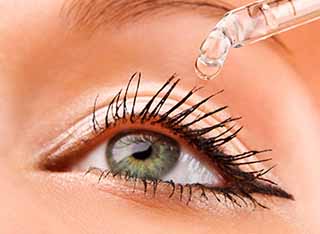Diagnosing Dry Eyes in Post-Menopausal Women using Schirmer’s Test in Open and Closed Eyes without Anesthesia

Abstract:
Objectives:
To
compare the wettability and wetting time between open and closed eyes of post menopausal
women using Schirmer’s test without anaesthesia (ST) and to assess the number of
dry eyes in open (STO) and closed (STC) schirmer test.
Methods:
One-Hundred
and Twenty eyes of 60 normal Post-Menopausal women were recruited from Sri Ramachandra
University. Schirmer test (ST) was performed in a closed environment with the absence
of air flow. This procedure was performed with the subjects both eyes open and closed
with an interval of 1 hour and were conducted in 5 minutes. If wetting values are
35 mm before 5 minutes, wetting time should be recorded.
Results:
In
this study 120 eyes of 60 Post-menopausal women were included. Measurements of STI
performed with open eyes (27.0 ± 9.5) were higher statistical different from those
performed with closed eyes (17.5 ± 11.0) in right eye of the patients. Measurements
of STI performed with open eyes (27.5 ± 9.9) were higher statistical
different from those performed with closed eyes (19.0 ± 11.4) in left eye of the
patients. Wetting time of STI performed with open eyes (4.1 ± 1.2) were
lower statistical different from those performed with closed eyes (4.7 ± 0.8) in
right eye of the patients. Wetting time of STI performed with open eyes
(4.1 ± 1.2) were lower statistical different from those performed with closed eyes
(4.6 ± 0.8) in left eye of the patients. The p value from measurements of STI
for right and left eye was 0.0005 and the p value from wetting time for right
and left eye was 0.0005, so, there was a significant change between open and closed
eyes.
Conclusion:
ST
performed with open and closed eyes can have an important influence in the
diagnosis of dry eyes in post-menopausal women.
Keywords: Dry
eyes, Post-menopausal women, Opened schirmer’s test, closed schirmer’s test.
References:
[1]. Adam J, Paulsen J Cruickshanks, Mary E Fischer, Guan-Hua Huang, Barbara EK, Klein Ronald, Klein Dayna, S Dalton. Dry Eye in the Beaver Dam Offspring Study: Prevalence, Risk Factors, and Health-Related Quality of Life. Am J Ophthalmol. Volume 157, Issue 4, Pages 799–806, April 2014.
[2]. Bawazeer AM, Hodge WG. One-minute Schirmer test with anesthesia. Cornea. 2003; 22 (4):285-7. Comment in: Cornea. 2004;23(3):318-9; author reply 319.
[3]. Clinch TE, Benedetto DA, Felberg NT, Laibson PR. Schirmer’s test. A closer look. Arch Ophthalmol. 1983; 101(9):1383-6.
[4]. Caterina Gagliano, Salvatore Caruso, Giuseppe Napolitano, Giulia Malaguarnera. Low levels of 17-β-oestradiol, oestrone and testosterone correlate with severe evaporative dysfunctional tear syndrome in postmenopausal women: a case–control study. Br J Ophthalmol 2014; 98: 371-376 doi: 10.1136/bjophthalmol-2012-302705.
[5]. Cho P, Yap M. Schirmer test II. A clinical study of its repeatability. Optom Vis Sci. 1993; 70(2):157-9.
[6]. Cho P, Yap M. Schirmer test I. A review. Optom Vis Sci. 1993; 70(2):152-6.
[7]. Design and conduct of clinical trials: Report of the Clinical Trials Subcommittee of the International Dry Eye Work Shop (2007). Ocul Surf. 2007; 5(2):153-62.
[8]. Debra A Schaumberg, David A Sullivan, Julie E Buring et al. Prevalence of dry eye syndrome among US women. Am J Ophthalmol. Volume 136, Issue 2, Pages 318–326, August 2003.
[9]. Gilbard JP, Rossi SR, Azar DT, Heyda KG. Effect of punctal occlusion by Freeman silicone plug insertion on tear osmolarity in dry eye disorders. ClaoJ. 1989; 15(3):216-8.
[10]. Hida RY, Mascaro VL, Hofling-Lima AL, Goto E, Tsubota K, Gomes JA. Métodos Diagnósticos. In: Gomes JA, Alves MR, editores. Superfície ocular. Rio de Janeiro: Cultura Médica; 2006.
[11]. Hida RY, Nishiwaki-Dantas MC, Hida MM, Tsubota K. [Quantitative tear study using the red phenol test in the Brazilian population]. Arq Bras Oftalmol. 2005; 68(4):433-7. Portuguese.
[12]. Korb DR. Survey of preferred tests for diagnosis of the tear film and dry eye. Cornea. 2000; 19(4):483-6.
[13]. Lemp MA. Recent developments in dry eye management. Ophthalmology. 1987; 94(10):1299-304.
[14]. Lemp MA. Report of the National Eye Institute/Industry workshop on Clinical Trials in Dry Eyes. CLAO J. 1995; 21(4):221-32.
[15]. Lemp MA. Keratoconjunctivitis sicca (introduction in the cornea). In: C.S. Foster, D.T. Azar, C.H. Dohlman (Eds.) Scientific foundations and clinical practice. Lippincott Williams and Wilkins, Philadelphia; 2005: 573–576.
[16]. Lima CG, Siqueira GB, Cardoso IH, Sant’Anna AE, Osaki MH. [Evaluation of dry eye in the preoperative and postoperative period of blepharoplasty]. Arq Bras Oftalmol. 2006; 69(3):327-82. Portuguese.
[17]. Michael A. Lemp. Dry Eye (Keratoconjunctivitis Sicca), Rheumatoid Arthritis, and Sjögren’s Syndrome. Am J Ophthalmol. Volume 140, Issue 5, Pages 898–899, November 2005.
[18]. Nishiwaki-Dantas MC. Olho seco. Arq Bras Oftalmol. 19990; 62(1):101-5.
[19]. Nichols KK, Mitchell GL, Zadnik K. The repeatability of clinical measurements of dry eye. Cornea. 2004; 23(3):272-85.
[20]. Nichols KK, Nichols JJ, Mitchell GL. The lack of association between signs and symptoms in patients with dry eye disease. Cornea. 2004; 23(8):762-70.
[21]. Nichols KK, Nichols JJ, Lynn Mitchell G. The relation between tear film tests in patients with dry eye disease. Ophthalmic Physiol Opt. 2003; 23(6):553-60.
[22]. Ogawa Y, Okamoto S, Wakui M, Watanabe R, Yamada M, Yoshino M, et al. Dry eye after haematopoietic stem cell transplantation. Br J Ophthalmol. 1999; 83(10):1125-30.
[23]. Research in dry eye: Report of the Research Subcommittee of the International Dry Eye Work Shop (2007). Ocul Surf. 2007; 5(2):179-93.
[24]. Versura P, Campos EC. Menopause and dry eye. A possible relationship. Gynecol Endocrinol 2005; 20(5):289-98.
[25]. Shimazaki J, Shimmura S, Fujishima H, Tsubota K. Association of preoperative tear function with surgical outcome in severe Stevens-Johnson syndrome. Ophthalmology. 2000; 107(8):1518-23.
[26]. Shimazaki J, Sakata M, Tsubota K. Ocular surface changes and discomfort in patients with meibomian gland dysfunction. Arch Ophthalmol 1995; 113: 1266–70.
[27]. Toda I, Asano-Kato N, Komai-Hori Y, Tsubota K. Dry eye after laser in situ keratomileusis. Am J Ophthalmol. 2001; 132(1):1-7.
[28]. Tsubota K. Tear dynamics and dry eye. Prog Retin Eye Res. 1998;17(4):565-96.
[29]. Tsubota K. The importance of the Schirmer test with nasal stimulation. Am J Ophthalmol. 1991; 111(1):106-8.

